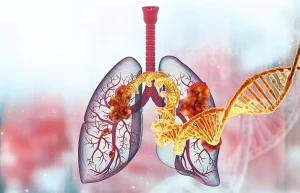More primary care doctors mean longer life for patients, but a shortage of these physicians is looming, a new study finds.
Why? Fewer medical students are choosing primary care as a career, mostly because of money, the researchers noted.
However, every 10 additional primary care doctors per 100,000 Americans was associated with a nearly 52-day increase in life expectancy from 2005 to 2015. In contrast, 10 more specialists per 100,000 increased life expectancy by only 19 days, the researchers found.
“Primary care physicians serve as the primary point of contact for most of the population and often perform preventive care, cancer screening and early diagnosis,” said study lead author Dr. Sanjay Basu. He’s an assistant professor of medicine and health research and policy at Stanford University in California.
But according to the Association of American Medical Colleges, a dramatic shortfall of primary care physicians is predicted by 2030.
The crux of the problem is that specialists are paid more than primary care doctors, which has prompted more medical students to avoid primary care, the researchers noted.
“There are few incentives to go into primary care among U.S. medical school graduates,” Basu said in a Stanford news release. “Pay tends to be lower, burnout rates higher and prestige lower.”
For the study, researchers used data from the American Medical Association Physician Masterfile for 2005, 2010 and 2015, and the U.S. Census Bureau.
Specifically, they looked at the effect primary care doctors had on deaths from cardiovascular disease, cancer, infectious disease, respiratory disease, and substance abuse or violence.
The researchers found that an increase of 10 primary care doctors per 100,000 was associated with a 0.9 percent reduction in cardiovascular deaths, a 1 percent reduction in cancer deaths and a 1.4 percent decline in respiratory disease deaths.
“The surprising result was how much primary care physician supply has declined, despite so much emphasis on primary care over the last decade,” Basu said. “I think the problem comes down to money. We pay less for prevention than treatment — and the former is where primary care lives.”
Basu and his colleagues also found that people who moved to areas with more primary care doctors lived longer.
Yet despite the correlation between better health and primary care, the number of primary care doctors is likely to keep declining.
According to the U.S. Department of Health and Human Services, of the more than 600,000 doctors in America in 2010, only about 200,000 were primary care doctors.
“The passionate students who care about population health really want to go into primary care,” Basu said. “But they also have serious education debts and are looking at the paychecks for fields like dermatology, ophthalmology or urology. They don’t actually find those fields compelling, but the pay disparity is often just too much for them to take a low-level primary care job instead.”
The report was published online Feb. 18 in the journal JAMA Internal Medicine.
More information
The U.S. Department of Health and Human Services offers more information on primary care physicians.
Source: HealthDay
Copyright © 2025 HealthDay. All rights reserved.

















